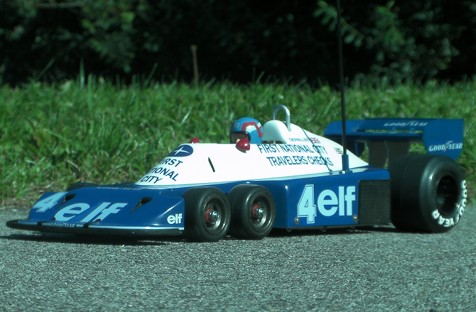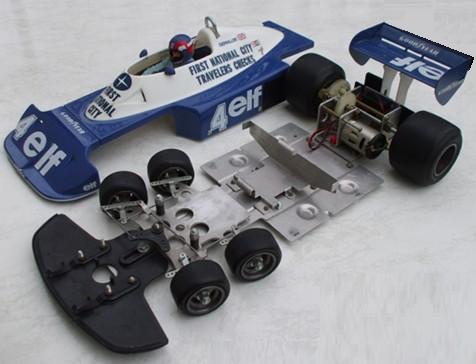The Formula platform
Tamiya quickly made their debuts in the Formula 1 class cars, therefore the name given by fans to this chassis class (F for Formula). but you'll need to travel in time to year 1992 to find an official name for it (the F102 chassis on the 58104 McLaren MP4/6 Honda kit). By the way, note that Tamiya retroactively called the F102 predecessor the F101.
This is Tamiya's third model, the first to inaugurate the series: 58003 Tyrrell P34 Six Wheeler kit. This car has a very specific design that required the designers to really work hard to reproduce the complex steering system.
Tyrrell P34 Six Wheeler boxart
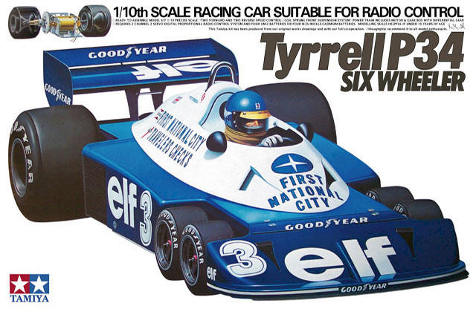
Original chassis
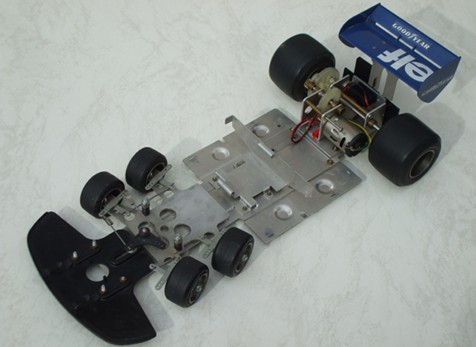
Original steering system
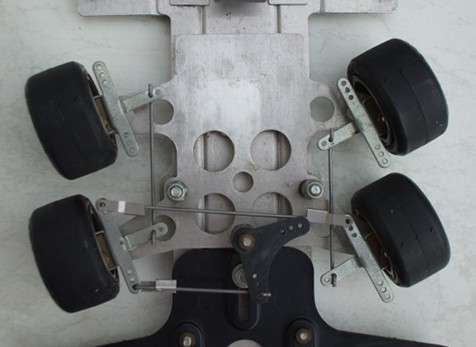
49154 Tyrrell P34 Six Wheeler (2000)
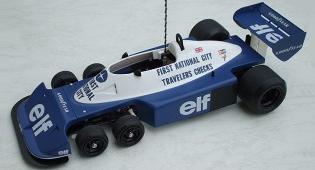
Re-released chassis
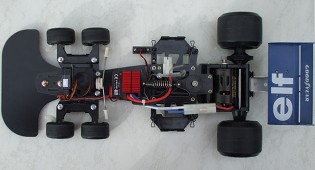
Re-released steering system
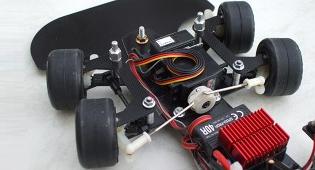
For their third kit, Tamiya didn't choose the easy way since the steering system is very complex. The rear deck is an adaptation of the first on-road chassis featuring motor relocation. When re-releasing it in 2000 on the modified F103RS chassis, Tamiya had also to entirely revisit the front drivetrain, but made it much simpler.
From then on, Tamiya will bring more Formula 1 cars in their offering, bringing evolutions to the platform as years go by. The first platform is named F1 by fans and the Tyrrell P34 Six Wheeler is the first car using it, even though the front drivetrain is specific.
58010 Ligier JS9 Matra (1978)
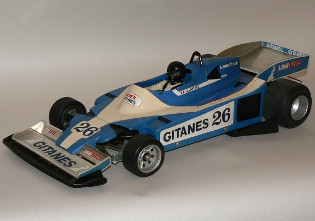
58011 Ferrari 312T3 (1979)
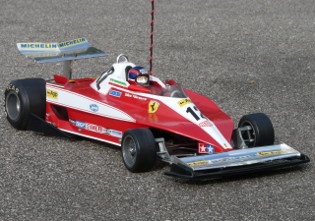
58012 Ligier JS9 Matra CS
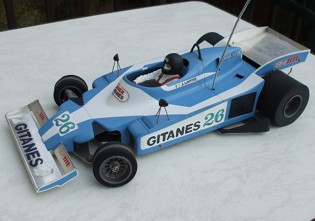
58019 Williams FW07 CS (1980)
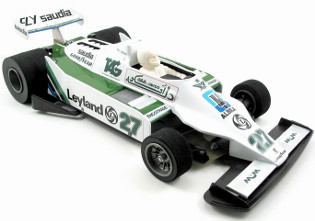
58020 JPS Lotus 79 CS (1980)
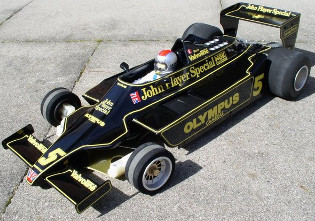
58031 Brabham BT50 BMW Turbo CS (1982)
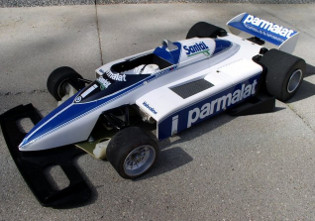
The direct comparison between the specific Tyrrell P34's and the JPS Lotus' chassis doesn't show a direct relationship at first sight. Apart from the front drivetrain, the rest of the chassis is very similar, especially the rear drivetrain and the central part of the chassis.
58012 Ligier JS9 Matra CS (1979)
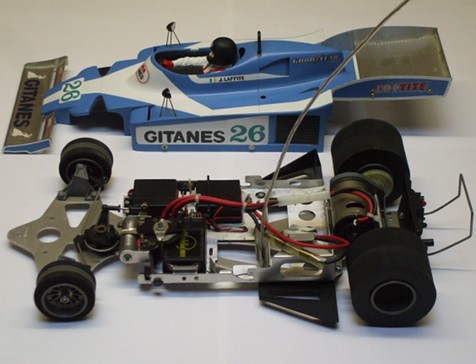
Last but not least, one more model based on the first F1 platform: an UFO, either in Tamiya offering or the RC world. Like the Tyrrell P34 Six Wheeler, this is a specifically adapted chassis used by a unique vehicle.
58017 B2B Racing Sidecar (1979)
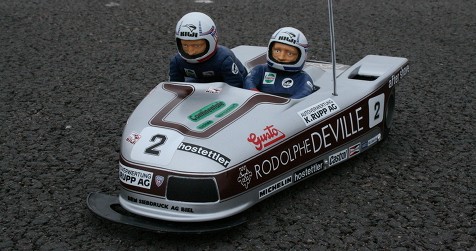
The unique chassis
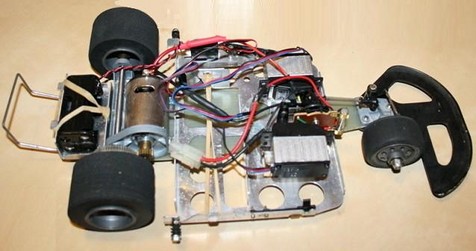
It takes efforts, but you can see 3/4th of the JPS Lotus 79 rear drivetrain: the B2B belongs to the first F1 lineage. On the other side, the front is unique. With this model, Tamiya made what could be considered as a concept-car, just like the Tyrrell P34 Six Wheeler. About this very original sidecar, the only one using the 1/8th scale, it is pretty unstable and hard to drive. But it is the scale replica of the real machine that won world championships in its category. You can easily imagine that the real model handled much better than its replica...
The B2B Racing Side Car promotional video (© Tamiya)
In 1979, Tamiya released an evolution for the Formula series. The new F2 platform (that's the name displayed on the box and on the manual) will take place next to the F1 since the idea is to capture new clients: alike Formula 2 compared to Formula 1, the F2 chassis is meant to be an economic alternative to the F1. The few models using it tend to show that the commercial success was not as good as expected.
F1 and F2 promotional video (© Tamiya)
The main difference between F1 and F2 is the use of more plastic in the chassis structure: an aluminum frame is used to stiffen the chassis, the rest is made of plastic.
58013 March 782 BMW (1979)
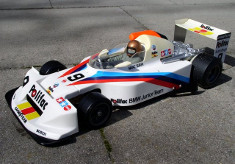
58014 Martini Mk.22 Renault (1979)
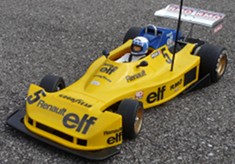
58018 Ralt RT2 Hart 420R (1980)
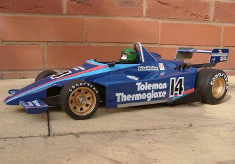
58030 Honda F-2 CS (1982)
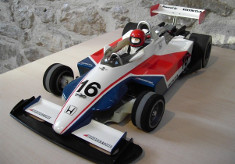
F2 chassis
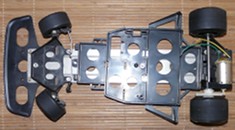
F2 from below
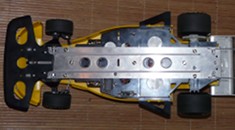
F2 Competition Special chassis
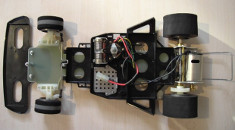
F2 Competition Special chassis from below
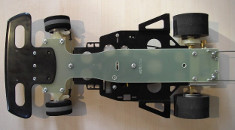
The F2 version doesn't seem to have been a best seller, either if you consider the number of models using it or the collector's enthusiasm for the models.Tamiya may have given this chassis a last try when they released the Competition Special version 2 years later: either the public didn't like it or it was only the last stand before releasing the next evolution. This is probably a mix of these two guesses when you look at the period offering: Tamiya will wait until 1986 before they give a new try into the Formula series with the 58053 Road Wizard kit. Since 1983-1984, the RC market goes into a buggy craze and Tamiya offering shows that.
However, before reviewing the Road Wizard and the modern Formula 1 chassis, another chassis reveals a somewhat important aspect of Tamiya strategy. This chassis doesn't have any official name, it was used only by 2 models, it doesn't seem to have been a best-seller either and collectors interest seem to be focused only on their bodyshells.
Chassis diagram
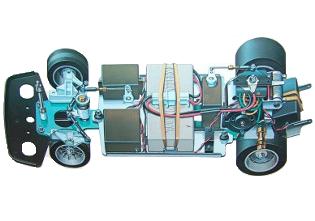
Motor mount
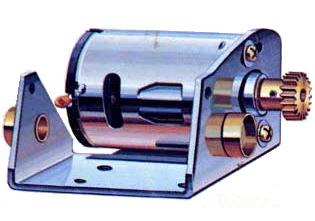
Front and rear drivetrains
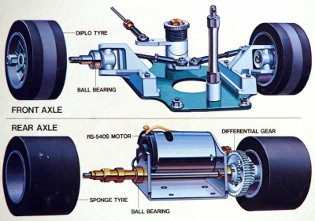
The chassis
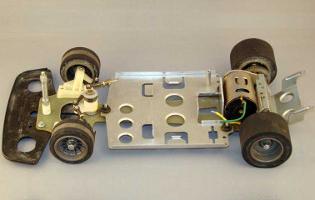
58025 VW Golf Racing Group 2 (1981)
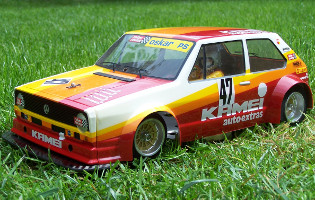
58026 Renault 5 Turbo (1981)
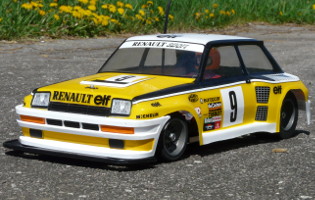
The chassis is made out of an epoxy plate inspired by the F1 Competition Special chassis, but yet unique to these models. The aluminum radio plate comes from the first Competition Special platform (the 1978 kit 58005), the nylon uprights, rims and tires come from the F1 Competition Special chassis (kit 58012) and the servo-saver was borrowed from the Racing Master Mk.1 (kit 58021).
In short, this hybrid chassis takes the best out of the two first platforms released by Tamiya. The result is an 1/12th chassis, a kind of entry-level Pan-Car, far less engineered than the Racing Master series, but still providing a very interesting handling on the track, precise, sharp and fast.
Despite very nice bodyshells, which are the main interest for collectors in these models, this "Lego" platform will not really meet its public and Tamiya will soon abandon it (the models disappeared from the 1985 RC Guide Book edition). Even though this platform was not a commercial success, it is Tamiya's first approach at seriously rationalizing development and production costs.
Promotional video (© Tamiya)
Conclusion about the first Formula 1 platform
Very soon, Tamiya stepped into the F1 segment of market using a chassis design close to their very first chassis. However, the F1 platform will quickly improve to offer very decent level of performance at the time, namely remarkable speed and grip (thanks to the foam tires).
Very soon too, Tamiya took care of entry level models, which means accessibility of a wider range of public to the hobby, especially when they offered the F2 variant, despite the fact it doesn't seem to have been a best-seller. Already then, using more plastic to replace metal would both allow to reduce costs and to merge the RC line of products with Tamiya's main know-how in plastic molding. The last platform used by the VW Golf and Renault 5 Turbo is also Tamiya's first large scale attempt at mixing parts to make a new chassis, here again without great success despite very correct performance of the chassis.
For a few years, Tamiya will pull away from the F1s to focus most of their efforts on the upcoming buggy craze. But when Tamiya will seriously get back into F1s, they will create a whole new innovative chassis generation that will define what will F1 be in RC up to now.
Related articles:




